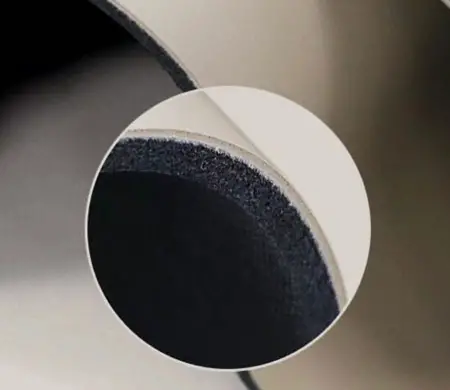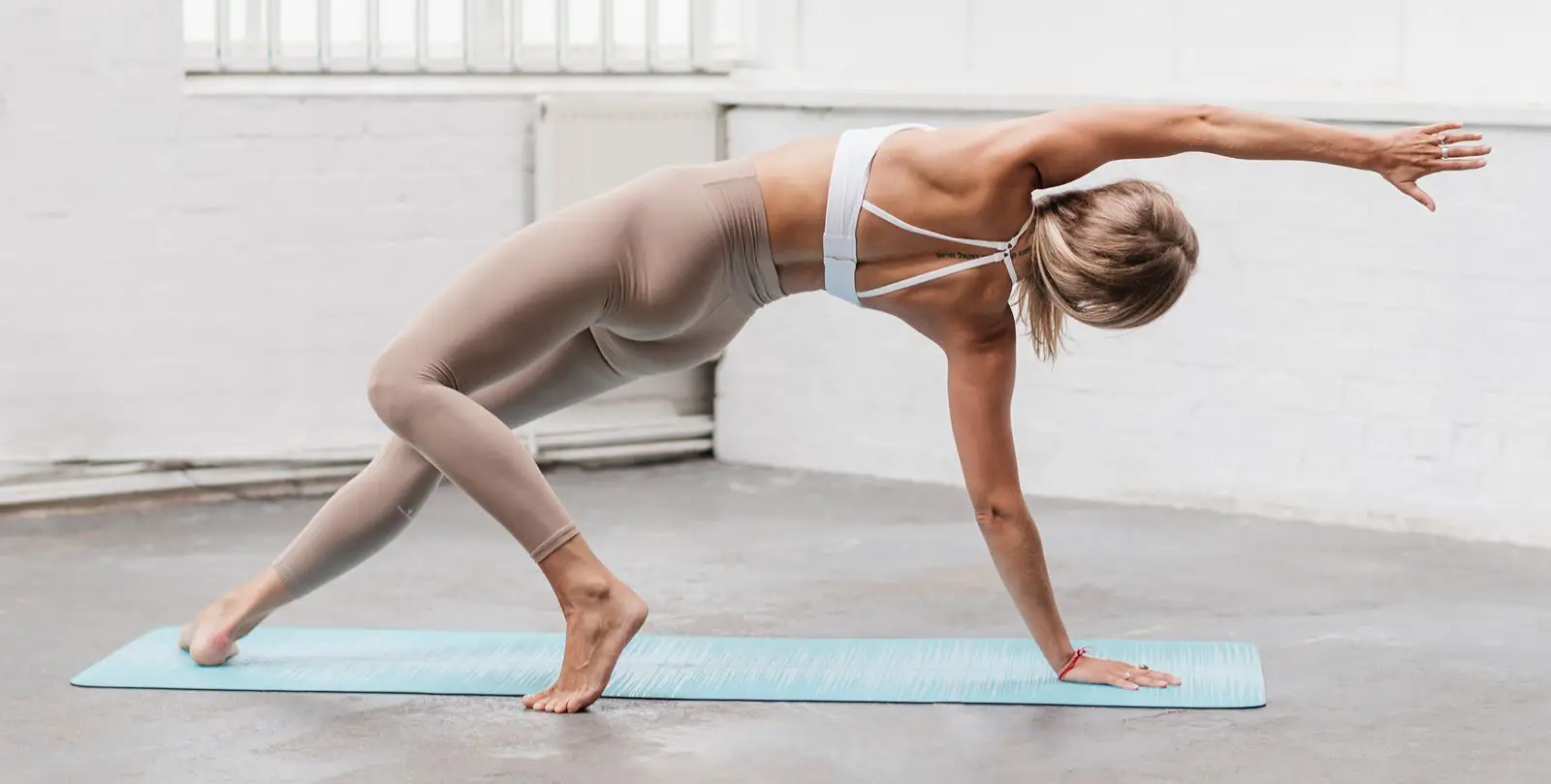In our ever-evolving world, buzzwords like “eco-friendly”, “biodegradable”, and “sustainable” have become crucial descriptors on product labels. In the realm of yoga mats, polyurethane (PU) stands out as an Earth-friendly, human-friendly material that’s worthy of its positive reputation.
Despite some circulating misconceptions, extensive research confirms that polyurethane poses no risk to our health. Its versatility has led to its widespread use in items we interact with daily. From our favorite pair of shoes and convenient tote bags to our trusted yoga mats and even in medical prosthetics, polyurethane’s extensive reach is a testament to its safety.
Yet, simply stating that PU yoga mats are eco-friendly and safe for humans might not be convincing enough. So, let’s take a deeper journey into the world of polyurethane. It’s time to debunk some myths and uncover the truths about this fascinating material. Ready to dive in? Let’s get started!
Is Polyurethane (PU) a plastic?
Indeed, Polyurethane (PU) is a type of plastic. You might be thinking, “A plastic? Really?” and before you make any hasty judgments, let me add a crucial ‘BUT’ here. This ‘BUT’ underscores why some PU is considered an eco-friendly material, and why it’s a superior choice for a yoga mat, particularly in contrast with PVC yoga mats.
It’s key to remember that just as there are diverse types of apples for making a delicious pie or an array of chocolates for a sweet indulgence, there are various types of plastics as well. Each one comes with its unique set of properties and uses. Some of these plastics intersect with our daily lives in the most common ways, for example:
- Polyethylene Terephthalate (PET or PETE): often used in beverage bottles and other food packaging. PET is usually clear and has a good moisture barrier.
- High-Density Polyethylene (HDPE): commonly used for milk jugs, detergent bottles, and motor oil bottles. HDPE is more rigid than other plastics, which makes it ideal for products requiring a stiffer material.
- Polyvinyl Chloride (PVC): known for its versatility, PVC can be used in rigid applications such as pipes and window frames or in flexible applications like insulation on wires. In addition, PVC is also used for making yoga mats, but those yogis who care about the environment would proudly reject using them.
- Low-Density Polyethylene (LDPE): often used in bags for bread, frozen foods, and shopping bags. LDPE is also used in some bottles and containers.
- Polypropylene (PP): commonly used for yogurt containers, straws, and other food containers. PP has a high melting point, so it can be used for products that might need to withstand higher temperatures.
- Polystyrene (PS): known in its expanded form as styrofoam, PS is used for coffee cups, food service trays, and protective packaging for delicate items.
- Polycarbonate (PC) and Acrylonitrile Butadiene Styrene (ABS): used for a variety of consumer products like LEGO bricks, phone cases, and other durable items.
- Polyurethane (PU): frequently used in foam forms for furniture, mattresses, and insulation, as well as in paints, varnishes, and elastomeric materials like yoga mats.
It’s clear that we live in a world where plastic is pervasive and in some instances, it serves us well. Consider PVC pipes, for example. They are designed to be sturdy, cost-effective, lightweight for transport, and importantly, resistant to the biodegradable process. These traits make them an excellent choice for long-term underground use. After all, we wouldn’t want our plumbing systems to degrade swiftly! The endurance of many plastics, which can persist for hundreds to thousands of years without decomposing, is a quality that can be beneficial in such contexts.
However, when this same longevity is applied to objects with a comparatively short lifespan, like a yoga mat, the implications are far less positive. A cheap PVC yoga mat may serve us for a few months or even a year, but it’s likely to persist in the environment far longer after it’s discarded, contributing to the global plastic waste issue.
Therefore, labeling plastic as universally “bad” wouldn’t be entirely accurate. It’s rather about how and where we utilize it.
When it comes to yoga mats, the scale tips decidedly in favor of a Polyurethane (PU) mat over its PVC counterpart. Let’s delve deeper into this comparison to understand why.
Which type of PU is used in yoga mats?
Polyurethane is a versatile material that’s used in many industrial and consumer products. It’s a polymer, which means it’s made of large molecules made up of repeating subunits. The process of making polyurethane involves two primary ingredients: a polyol and a diisocyanate.
The ratio of polyol to diisocyanate, and other additives can change the properties of the final product, making polyurethane an incredibly versatile material. For example, by tweaking these variables, manufacturers can produce flexible foams, rigid foams, sealants and perfect grip yoga mats.
Let’s go down the rabbit hole and look at which type of Polyurethane is used in making a non-slip with a perfect grip yoga mat.
- Flexible Polyurethane Foam: this type of polyurethane is soft and flexible, making it ideal for cushioning and comfort applications. It’s commonly found in furniture, mattresses, and car seats.
- Rigid Polyurethane Foam: this type of polyurethane is firm and offers excellent insulation properties. It’s often used in construction for insulation and in appliances like refrigerators and freezers.
- Thermoplastic Polyurethane (TPU): unlike foams, TPU is a type of plastic that’s highly elastic and flexible. It’s often used in applications like seals, and wheels, and even in the soles of certain types of athletic shoes. This is also the type of PU that is used in producing PU top yoga mats.
- Polyurethane Coatings, Adhesives, Sealants, and Elastomers: these types of polyurethanes are typically very durable and resistant to wear and environmental damage, making them excellent for use in industrial applications, outdoor environments, and protective finishes.
- Waterborne and Solventborne Polyurethanes: these are often used in coatings and finishes. The choice between waterborne and solventborne can depend on the specific application and environmental regulations.
A yoga mat requires a delicate balance of flexibility and durability to serve as an ideal companion for a yogi. And with this in mind, Thermoplastic Polyurethane (TPU) steps forward to fulfill this role, creating a yoga mat that’s not just perfect for your practice, but also kind to our Earth.
Properties of the PU (yoga mat)?
Till now we learned that a specific type of polyurethane – thermoplastic polyurethane (TPU) – is used in producing grippy yoga mats. But why exactly this PU wins the battle? This is because this type of PU offers the desired combination of elasticity, durability, and resilience, which are key properties for yoga mats.
TPU’s elasticity allows the mat to return to its original shape after being compressed, providing a good level of cushioning. The durability of TPU ensures that the mat can withstand regular use without wearing out too quickly. Finally, the resilience of TPU means that the mat provides a stable and grippy surface to practice on, preventing slipping during yoga poses.
It’s worth noting that the exact formulation of the TPU can vary from manufacturer to manufacturer, as it can be customized to achieve a specific balance of properties. For example, some manufacturers might choose a formulation that’s more elastic to provide a softer mat, while others might choose a formulation that’s suitable for extremely grippy mat.
Yoga mats from polyurethane are the winners when it comes to grip, especially when the mat is wet from sweat. This makes them a popular choice for any style of yoga where some level of gip is required, but particularly popular among yogis that practice Ashtanga, Hot and Power yoga.
Why PU yoga mat is considered environmentally friendly? (compared to PVC)
While Thermoplastic Polyurethane (TPU) typically isn’t biodegradable under standard environmental conditions, exciting progress has been made in the realm of polyurethane development. Unlike PVC, researchers have successfully developed biodegradable PU. This innovation is now being embraced to create a variety of eco-friendly products, from drybag floats and backpacks to, you guessed it, our beloved yoga mats!
Biodegradation is a process that breaks down materials with the help of microorganisms such as bacteria or fungi. Most conventional plastics, including TPUs, are resistant to this process. However, biodegradable plastics can break down under certain conditions. Biodegradable TPUs are usually made by incorporating plant-based materials into the polymer structure, making them more susceptible to breakdown by microorganisms.
Biodegradable Thermoplastic Polyurethane (TPU) has shown itself to be an ecological warrior, offering a more sustainable alternative to the commonly used PVC yoga mats.
Why do I swoon over biodegradable TPU yoga mats, you may wonder? Well, biodegradable PU mats are durable, recyclable, and the cherry on the top: they biodegrade in 3 to 5 years, thereby significantly reducing the volume of waste that ends up in landfills.
While there is still a long road ahead in the perfect management of bio-degradable waste and reducing the carbon footprint, choosing a biodegradable PU yoga mat is a substantial step forward. In comparison to PVC, it degrades much faster and is significantly more eco-friendly in its production, use, and disposal. So, let your yoga practice not only nourish your body and soul but also respect and care for our planet.
Important note: not all yoga brands or yoga shops sell biodegradable PU yoga mats. Make sure to read the label and check with the seller which TPU has been used in producing a yoga mat.
Deciding on Your Perfect PU Yoga Mat

Having read all this, you might feel ready to rush out and secure a PU yoga mat. But hold that thought for just a moment longer. There’s a little more to consider. For instance, you’ll come across mats made from natural rubber or PVC, each boasting a PU top layer. This is because PU, while incredibly sticky and comfortable, isn’t used alone. It always needs a supportive base.
So, when choosing your yoga mat, aim for the ones with a natural rubber base beneath that grippy PU layer. This choice ensures your mat is entirely sustainable and lovingly earth-friendly, much like your yoga practice. The planet and your conscience will thank you!
Closing thoughts
When choosing a perfect yoga mat, it’s essential to consider not only its performance on the floor but also its impact on our cherished Mother Earth. So whenever the time comes to replace your yoga, choose the one that is friendly to you and to the environment, for example, biodegradable PU. The only hitch is that being such a high-quality material- it is slightly more expensive than its counterparts. But isn’t it worth it? Knowing that your sustainable PU top yoga mat helps to keep our planet a little cleaner and healthier?




